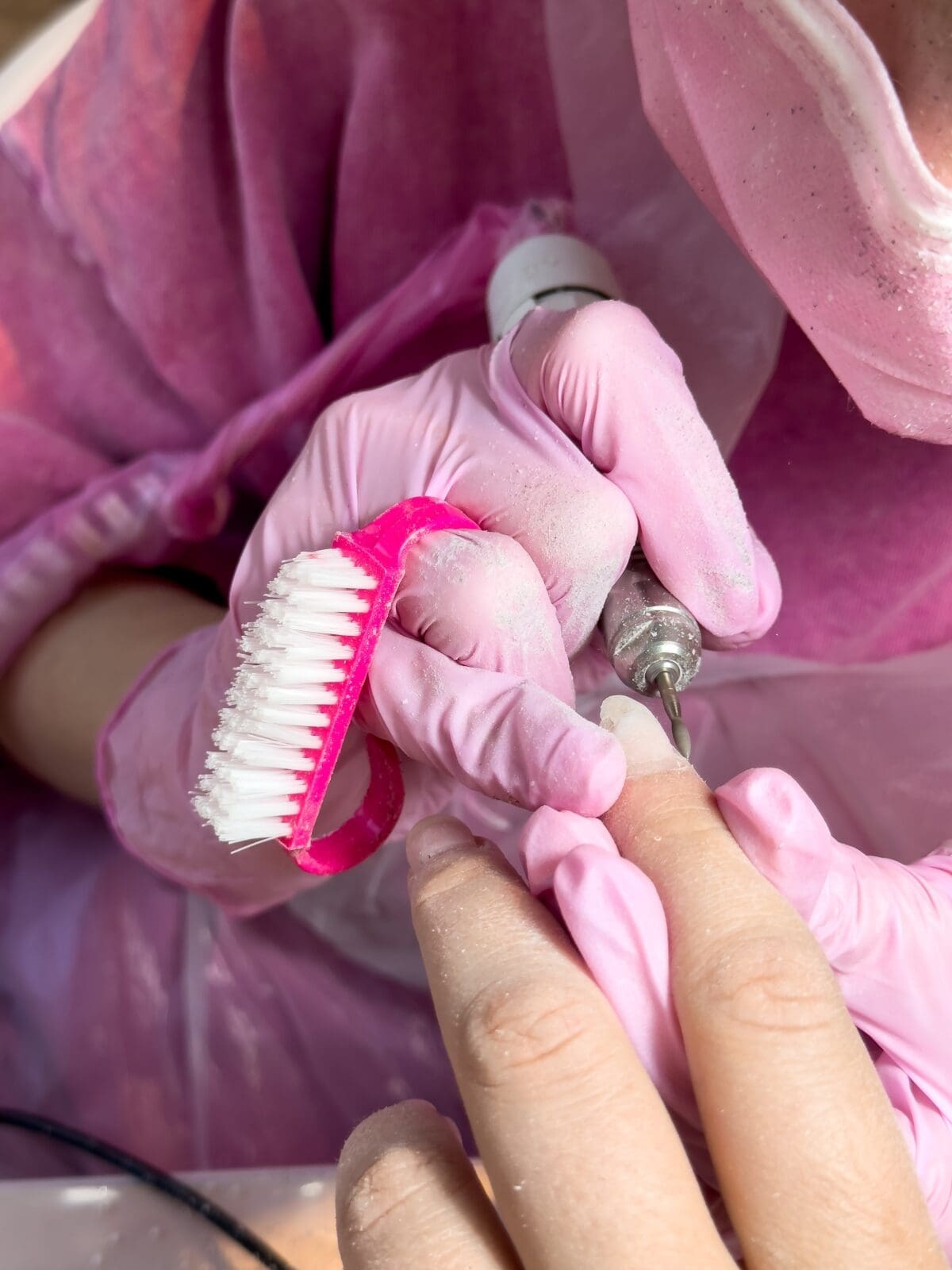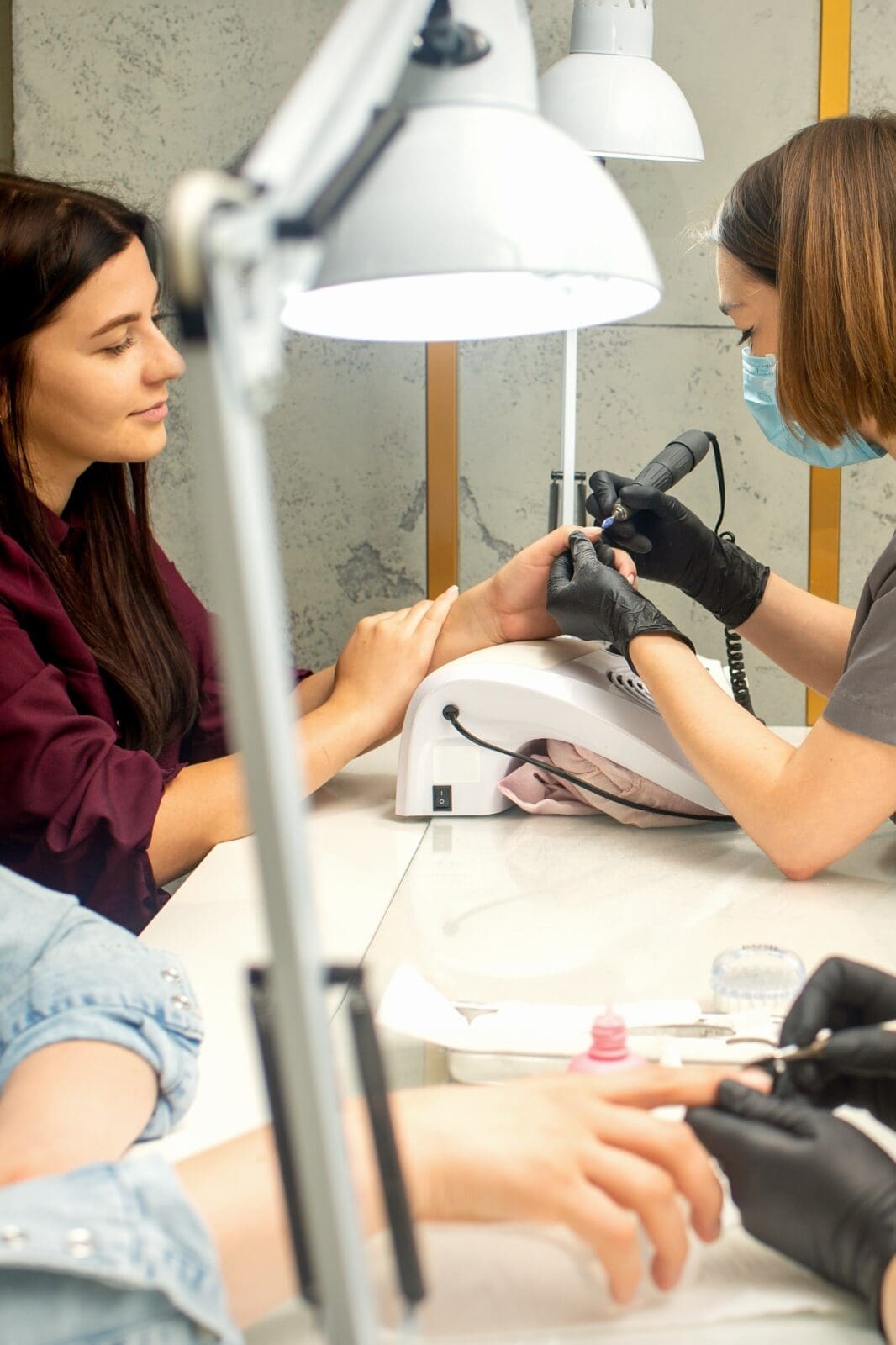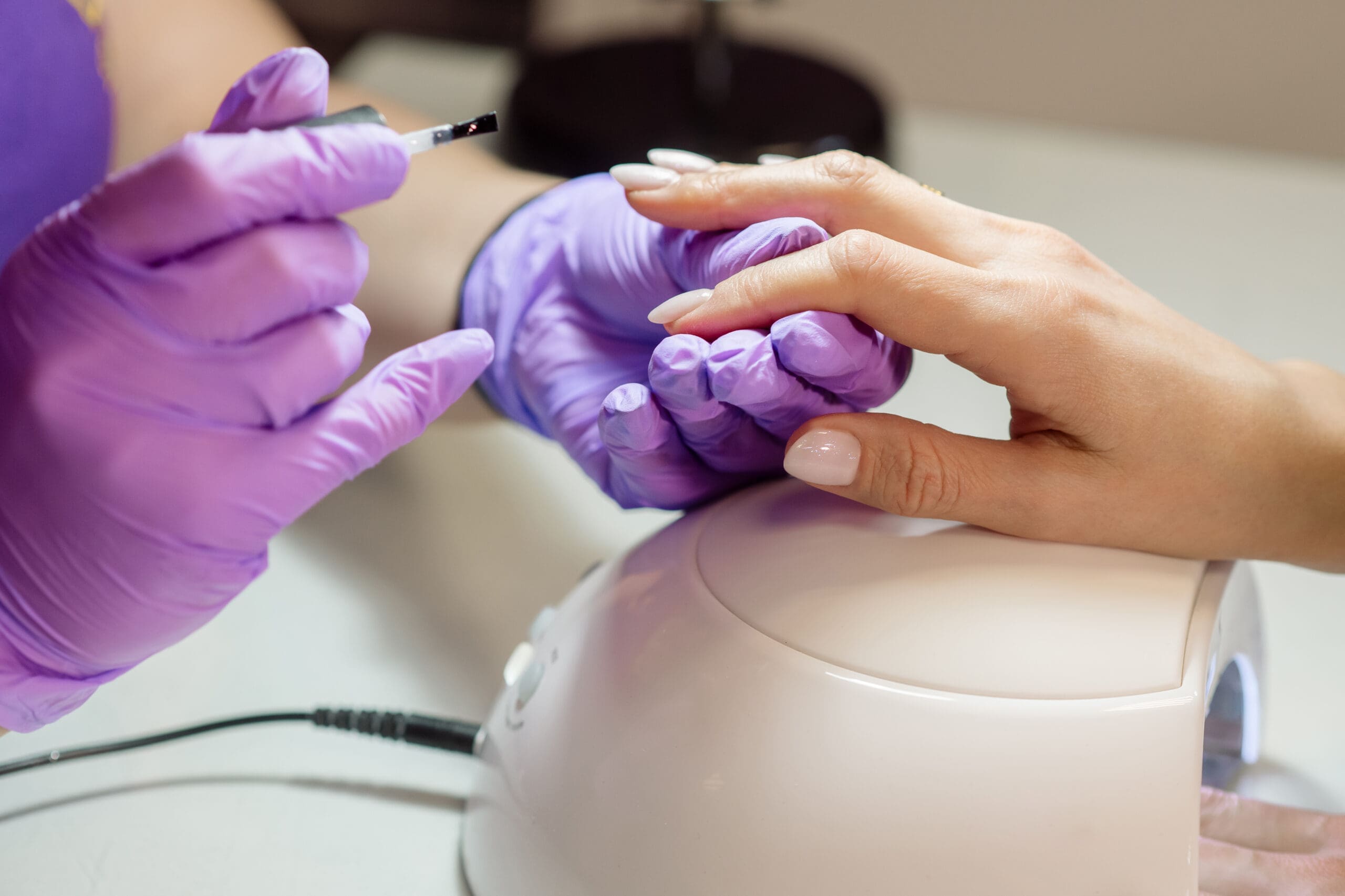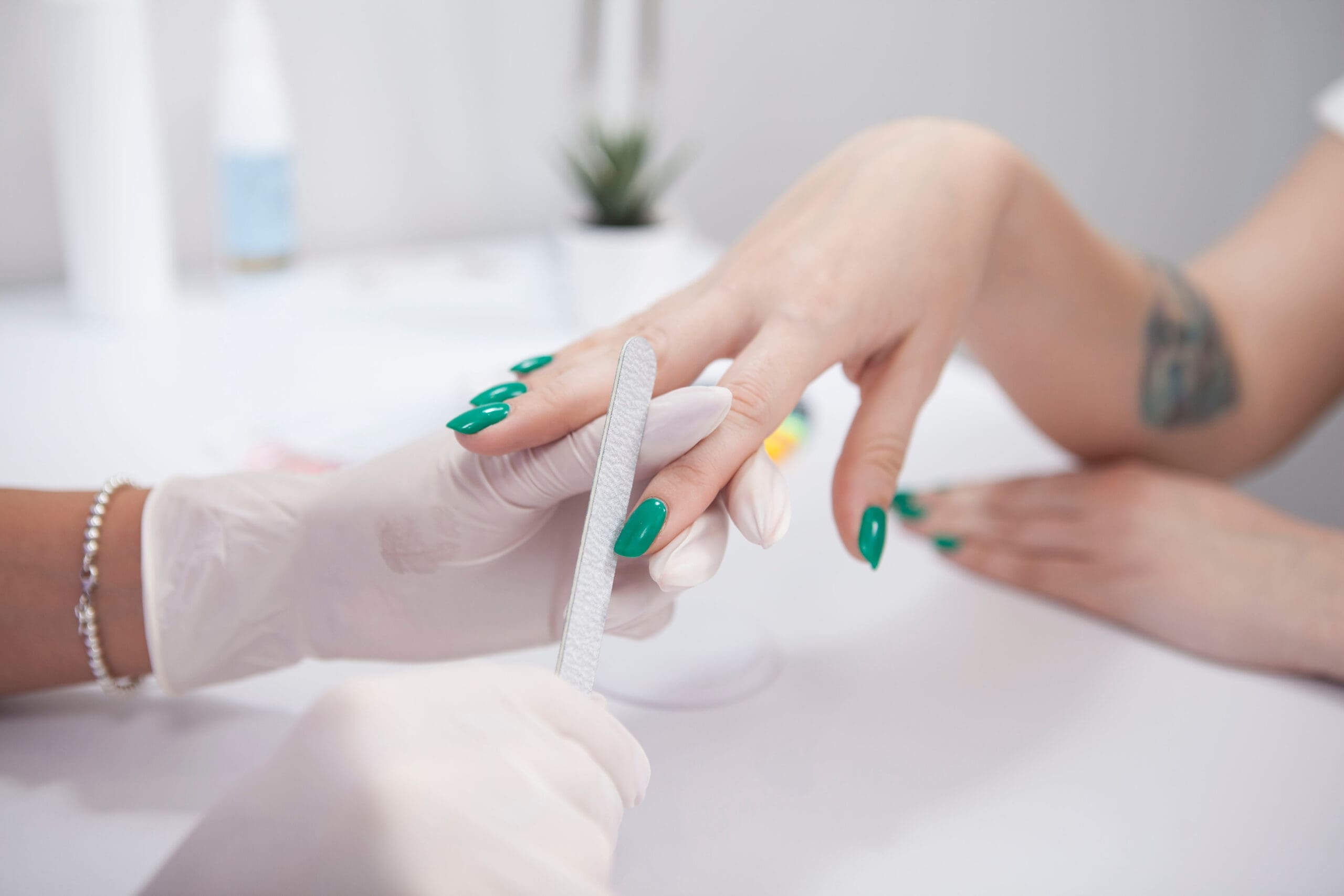Nail Technician CV Guide
Everything you need to know about getting the perfect Nail Technician CV
Are you recently qualified and looking for your first nail technician role, or are you currently in the job and wanting a change? If so, you will require a well-crafted CV when applying for jobs to demonstrate to prospective employers that you possess the necessary knowledge, skills and experience. You will also need to show you have the right personal qualities, as you will care for and style clients’ nails and provide various services.
Writing a CV for a nail technician role requires a blend of professionalism and creativity to showcase both your technical skills and artistic flair. You briefly tell the reader who you are and why your professional background and attributes are ideal for the job and their business. It requires you to focus on your education, work experience, skills and achievements and tailor your CV content to align with each role you apply for.
In this article, we will provide guidance on how to write a nail technician CV, what to include, some tips and an example to help you get started. It will hopefully increase your chances of securing an interview and, ultimately, the job.
In this Nail Technician CV guide
What to include in a Nail Technician CV
First impressions count, especially when it comes to your CV. It is the first thing prospective employers will see about you, and what you include in the document can significantly impact your chances of getting that all-important interview invite. It should be professional, concise, customised to each job and specific to grab the employer’s attention and stand out from other candidates.
If you look at some examples of CVs, you may notice that the designs, structure and content differ. However, they tend to have similar sections, such as contact information, professional summary, education, work experience, key skills, achievements and references. Focusing on these main sections and working through them can make the task more manageable. We will now look at this in further detail and make suggestions to help you decide what content to include.
Contact information
The contact information section of your CV should be at the top of the document, either in the middle or at the side, and be clear, accurate and easy to read. It is about making sure prospective employers can easily contact you. Here is what to include:
- Your full name (first name and surname).
- Your professional title, where relevant (e.g. “Nail Technician”).
- Your location (town, city or county).
- A reliable phone number where you can be easily contacted (ensure your voicemail sounds professional if you have one).
- A professional email address (avoid nicknames or overly casual handles).
- A link to your LinkedIn or an online portfolio (if applicable) showcasing your work (like Instagram or a website).
There are some types of information to avoid adding to your CV for privacy, security, bias and discrimination reasons, such as:
- Your home address.
- Personal information like age, date of birth, religion, gender, marital status and national insurance number.
- A photo (unless the job posting asks for one).
- Personal social media accounts (unless showcasing your work).
Always keep your contact information up-to-date and professional.
Professional summary
The next section of your CV, below your contact information, is your professional summary, which is also known as a personal statement, executive summary, professional statement or career profile. It is a 3-5 line paragraph that provides an overview of your skills, experiences, accomplishments, career goals and why you are the ideal candidate for the nail technician role.
An engaging and compelling professional summary is crucial, as it is one of the first things prospective employers will read on your CV. If it is engaging and grabs their attention, they may want to read on and know more about you. However, if it is generic and full of clichés, they may be discouraged from continuing reading. Your summary is your chance to grab their attention, express your passion and highlight what makes you stand out in your field.
You should tailor your professional summary to each nail technician position and add some of the following elements:
- A previous or current job title with an action verb, e.g. “Creative nail technician”.
- Years of experience, i.e. how long you have been in the industry. If you are new to the field, focus on your training and experiences.
- Areas of expertise and key skills like manicure and pedicure techniques, nail art, acrylics, gels, customer service, etc.
- Qualifications and certifications, like a diploma in nail technology or beauty therapy.
- Qualities like creativity, precision, hygiene standards and a passion for nail artistry.
- Any awards, recognitions, or milestones, such as building a loyal client base, improving customer retention or increasing sales of products.
- Career goals and passion, i.e. what you hope to achieve in the industry and what excites you about being a nail technician?
Here is an example of a professional summary for a nail technician:
“Creative and detail-oriented nail technician with 5+ years of experience in manicures, pedicures, and intricate nail art designs. Passionate about staying ahead of industry trends and providing exceptional customer service. Certified in gel and acrylic nail applications, with a strong focus on hygiene and client satisfaction.”
Education
Your CV should have an education section where you detail your relevant academic achievements, training and certifications. You can add it after your professional summary or work experience. If you have recently qualified and have limited direct work experience as a nail technician, it may be worth putting your education section first and your work experience after.
Adding a well-written education section is essential, as it assures potential employers that you have the necessary skills and knowledge for the role and meet the criteria detailed in the job description. It demonstrates your commitment to learning and mastering your craft and helps you stand out, especially in a competitive market.
Here is how you can craft an impressive education section for your nail technician CV:
- Start with your highest or most recent qualification
- Include the name of the certification, diploma or other qualification.
- Mention the institution or training school where you obtained it.
- Add the institution location, i.e. city or county, if it adds clarity.
- Detail the date of completion, start/end dates or dates attended.
- Any academic awards or notable accomplishments (e.g. graduating with honours or completing a prestigious course).
- Add relevant courses
- List specialist training you have completed, such as nail art design, gel polish application, acrylic nail extensions, etc.
- Add the date or year you completed them to show how recent they are.
- Include licence details (if applicable)
- If your local authority requires a nail technician licence, include it here, along with the licence number or expiration date.
- Highlight any additional workshops or seminars
- If you have attended advanced classes, seminars or workshops, include them to emphasise your ongoing growth.
- Include placements, apprenticeships or internships
- Mention any other academic experiences you completed during your education, including the company, role and outcomes.
- Add relevant school education
- If you are starting, you can include your secondary school education, e.g. GCSE’s, especially if you took any related courses.
If the employer asks for specific skills or qualifications (e.g. proficiency in gel or acrylic nails), ensure the education section meets their expectations.
Work experience/employment history
Your work experience, or employment history, is another crucial section of your CV. It is where you showcase your previous jobs and other professional roles and highlight your career progression, relevant skills and achievements. It demonstrates to prospective employers that you have the necessary expertise to master the offered services.
When considering what work experience to include, tailor the roles and responsibilities to the nail technician job and add your previous positions in reverse chronological order (most recent first). Here are some examples of elements to add to capture employers’ attention:
- Heading: Include a heading, “Work Experience” or “Employment History”.
- Job title: Use professional titles like “Nail Technician”, “Senior Nail Specialist”, or “Salon Assistant” to reflect your role accurately.
- Organisation name: Include the organisation you worked for to add credibility. If you have been self-employed or freelance, add the name of your business or where you worked.
- Location: Add where you worked, i.e. town, city or county.
- Dates of employment: Mention the month and year you started and ended each role. If you are still currently employed, add “present” instead.
- Key duties
- Highlight your key responsibilities in bullet point form.
- Start each bullet point with a strong action verb, like “designed”, “applied”, “consulted”, “performed”, “enhanced”, “achieved”, etc.
- Keep it brief and aim for three to five bullet points for each role.
- Highlight measurable accomplishments, such as growing a loyal client base, receiving awards, mastering new techniques and contributing to improvements.
- Mention specific skills utilised, like customer service, teamwork, and adaptability. Also, include if you are skilled with new trends or technologies (e.g. nail stamping, custom designs, etc.).
Here is an example of how you can add your work experience:
Work experience
Junior Nail Technician. Glamour Nails, London. January 2018 – February 2020.
- Assisted senior technicians with nail care treatments and provided support during peak hours.
- Applied nail enhancements, including overlays and basic designs.
- Promoted retail products to clients, boosting salon sales by 10%.
- Sanitised tools and equipment after each client session.
- Attended training sessions to develop skills in advanced nail techniques.
Key skills and achievements
Key skills are the abilities and strengths that make you effective in a specific role or field. Adding them to your CV is vital, as it provides a clear snapshot of your expertise and capabilities, helping employers quickly assess your suitability for the role. It also complements your work experience, reinforcing your accomplishments and making your CV tailored to the nail technician job.
To write a compelling key skills section for a nail technician CV, you should include a combination of hard and soft skills.
- Hard skills – are technical or job-specific skills, usually gained through education, training or on-the-job experience. Some examples for a nail technician include manicures, pedicures, nail art and design, acrylics, gel application, product knowledge, sanitation and hygiene.
- Soft skills – are interpersonal and behavioural traits that define how you interact with others and navigate the workplace. They are trickier to measure but equally vital. Some examples for a nail technician include customer service, communication, teamwork, attention to detail, creativity, time management, patience, reliability, adaptability and dexterity.
Focus on the skills that match the job description, as the business may use applicant tracking systems (ATS) that scan CVs for keywords and allow those that match to pass through. Also, highlight your unique strengths and present them in bullet point form for easy reading, for example:
- Skilled in gel polish, acrylic extensions and nail art design.
- Exceptional customer service and client consultation.
- Expertise in maintaining hygiene and safety standards.
You can also add your achievements to the key skills section to make it more compelling, which involves including specific accomplishments that demonstrate your expertise instead of just listing skills. We will look at how to focus on your ahievements later.
Other information
The main sections of a CV typically include your contact information, professional summary, education, work experience, key skills, achievements and references. However, this is not concrete; you can add and remove sections where you see fit. You may want to keep some of your information separate or add other information, such as:
- Certifications – you may wish to keep your certifications separate and list any advanced techniques, like using nail enhancement systems or innovative treatments.
- Volunteering and extracurricular activities – if you have been involved in charity events, local fairs, projects, competitions or workshops related to nail care and beauty, this can enrich your CV with a personal touch.
- Portfolio and visual evidence – if you have images of your work, you may want to include a portfolio section within your CV or as an attachment/link. Select a curated selection of your best work that illustrates a variety of styles and techniques, reinforcing your technical and artistic skills. Quality visuals of your work can be crucial in the creative industry.
- Professional memberships – you could list any memberships in relevant organisations (e.g. the Guild of Nail Technicians or the Federation of Nail Professionals) demonstrating your commitment to continuing education and adherence to best practices.
- Languages – if you speak additional languages, this could be an asset for working with diverse clients.
- Continuing professional development – perhaps list workshops, seminars or industry conferences you have attended to stay updated on trends and regulations.
- Hobbies and interests – perhaps include interests that give potential employers a glimpse of your personality and passion for the industry, e.g. artistic pursuits, wellness, self-care, fashion and beauty trendspotting, social media and content creation, community engagement., etc.
If you decide to include additional sections and information, ensure they are relevant and be mindful of separating the document too much, as it can make your CV look cluttered.
References
The last section of a CV is where you usually add your references. It is where you will include professional contacts (referees) who can vouch for your work ethic, skills and character. Well-chosen referees can provide potential employers with an objective perspective on your performance and reliability and confirm your technical proficiency in nail art, hygiene practices, and client relations, ensuring you are a trusted candidate.
Choose 2-3 referees who can speak specifically about your abilities as a nail technician. Prioritise individuals familiar with your work in a salon, spa or freelance setting. It may be a manager, supervisor, colleague or even a client if you have been self-employed.
Before writing the reference section, check if the job posting asks for specific details of your referees at this stage of the recruitment process. If it does not, you can add a simple statement under your heading, “References available upon request”, which can be beneficial if you lack space on your CV.
If you need to provide details, approach your chosen referees and ask their permission to include them on your CV. Once agreed, you can add the following information:
- Full name – clearly list their name so employers can identify them.
- Job title and organisation – mention their role and the establishment (e.g. salon or spa) where you worked together.
- Relationship – briefly explain how they know you, e.g. former manager, mentor or supervisor.
- Contact information – provide a reliable phone number and a professional email address.
Provide your referees with details of the nail technician job you are applying for so they can prepare and tailor their references accordingly. Ensure you keep their contact information up-to-date and accurate.
Tips for writing a Nail Technician CV
Crafting a stand-out CV is not just about listing your work history – it is about presenting a clear, appealing narrative of your professional journey, showcasing why you are the perfect fit for the role and ensuring it is easy to read, engaging and relevant. Here are some comprehensive tips to increase your chances of landing that interview:
- Customise your content – read the job description carefully and adjust your CV to highlight qualifications, skills and experiences that align with the employer’s needs. Use keywords from the posting to show them your eagerness for the role and to pass any applicant tracking systems (ATS). Avoid sending the same generic CV to every employer.
- Keep it short and sweet – only include information relevant to the specific nail technician role you are applying for, and keep your CV short, ideally between 1-2 pages. Remember, it is an introduction to who you are and what you can offer rather than your entire life history.
- Be truthful – never exaggerate or lie on your CV, as employers may catch you out in
- interviews, which can have serious repercussions.
- Use action verbs – begin each bullet point with strong action verbs like “developed”, “advised”, “delivered”, “promoted”, or “achieved” to make your strengths and accomplishments stand out. Avoid overused clichés, such as “hardworking” or “team player”, as they lack specificity.
- Use professional and consistent formatting – you can help your CV stand out by:
- Using a clean, professional layout with clear sections, headings and bullet points. Avoid long paragraphs.
- Using professional, simple and clear language, avoiding slang or overly casual expressions.
- Using the same tense throughout your CV. Typically, past tense is used for previous jobs, and present tense is used for your current role.
- Avoiding excessive use of fancy designs, colours and fonts.
- Sticking to a simple font like Arial, Calibri or Times New Roman and consistent size, e.g. 10-12 points.
- Ensuring your CV has adequate spacing to make it more visually appealing.
- Avoiding using personal photos, as it can distract and lead to bias.
- Using a digital format where possible. Save and send your CV as a PDF to ensure the formatting stays intact when viewed on different devices.
- Proofread thoroughly and seek feedback – ensure your CV is free of spelling and grammatical errors. A polished document reflects your attention to detail – a key skill for any nail technician. Ask a trusted colleague, mentor or even a family member or friend to review your CV and provide constructive feedback. Fresh eyes can catch mistakes you might miss.

Focus on achievements
Achievements on a CV are specific accomplishments or successes that demonstrate your skills, experience, and contributions in a meaningful way. Unlike job esponsibilities, which describe what you were required to do, achievements highlight how well you did it and the impact you made.
Focusing on your achievements in your CV is crucial, as they are often backed by measurable results, such as percentages, figures or timelines, making them more impactful to potential employers. They show what you have done and the value you have added, which can help differentiate you from other candidates, especially if they have similar credentials. Here is how you can focus on your achievements effectively:
- Identify your key achievements – choose achievements directly related to the role you are applying for and tailor them to showcase how your skills and successes align with the job requirements. Think about your impact and any praise, awards, promotions or compliments you received. For example:
- Where have you made a difference?
- What did you accomplish that others benefitted from?
- Where have you gone above and beyond or helped solve problems?
- What challenges have you tackled?
- Did a client or colleague say you did an excellent job?
- Have you mastered new techniques, tools or processes that added value?
- Have you undertaken any ongoing learning efforts to develop professionally?
- Use the STAR method – it helps you structure your achievements clearly by focusing on four elements:
- Situation – what was the challenge or context?
- Task – what were you responsible for?
- Action – what steps did you take to address the situation?
- Result – what was the measurable or impactful outcome?
- Be specific and not general – ensure you add specific details of your accomplishments. For example, instead of “Good at nail art,” say “Created intricate nail art designs, including hand-painted florals and detailed geometric patterns”.
- Look beyond nails – if relevant, describe any contributions to the overall success of a salon or spa, such as managing social media, organising promotions or contributing to branding efforts.
- Quantify your success – where possible, use numbers, percentages and other metrics to emphasise your results. For example, “Increased salon revenue by 15% through upselling services like nail art and treatments”.
- Use action-oriented language – begin each achievement with strong action words like “developed”, “designed”, “achieved”, “created”, and “increased” to make your impact clear and compelling.
You can weave your achievements into your work experience or skills or have a separate section. The latter may be better if you have many stand-out accomplishments.
Describe your experience
Experience on a CV refers to the jobs you have held, the responsibilities you have managed, and your past contributions, whether in paid, voluntary, or freelance roles. It provides a snapshot of your professional journey and helps employers understand your skills, accomplishments and suitability for the position.
When you effectively describe your experience on your CV, it shows employers how your past roles align with the job you are applying for and makes you a more credible candidate. It can also help you stand out from other candidates with similar qualifications.
Describing your experience on a nail technician CV involves presenting your skills, responsibilities and achievements in a way that highlights your professional expertise and value to potential employers. You will describe your experience in two main sections – your professional summary and work experience. Here is a recap:
- Professional summary – here, you will describe your experience by emphasising key roles, core skills, achievements and qualities relevant to the role, tailored to make a strong first impression. For example, “Experienced nail technician with 5+ years in customer service, recognised for creativity and client retention, consistently driving salon revenue growth”.
- Work experience – here, you will list your past jobs, volunteer work or any other experiences where you learned skills. Include job titles, employers, employment dates, key responsibilities and achievements. Customise your work experience descriptions to showcase your impact and relevance to the role you are applying for.
If you have limited direct experience as a nail technician, do not worry. You can still craft a compelling CV by focusing on transferable skills, relevant training and any hands-on practice you have had. Here is how to describe it effectively if you are in this situation:
- Highlight relevant qualifications and training – mention courses, certifications or workshops you have completed, especially in technical aspects, e.g. NVQ in Nail Services, hygiene training or advanced nail art classes. If you are still studying, mention it. For example, “Currently enrolled in Advanced Nail Sculpting Certification.”
- Emphasise transferable skills – include skills gained from other roles crucial in nail technician work, such as customer service, attention to detail, communication or creativity. For example, “Developed exceptional customer service skills in retail, ensuring client satisfaction and loyalty”.
- Mention informal or volunteer experience – if you have practised nail techniques on friends, family or during training or have completed nail work voluntarily, e.g. at community events, highlight this as hands-on experience. You could also create a portfolio of your nail art designs (even if informal) and mention it.
- Highlight strong achievements – if you have received positive feedback, won competitions or completed standout projects, add them.
- Include relevant hobbies and interests – add hobbies that highlight creativity, customer-focused traits or dedication to beauty trends. For example, DIY nail art, producing/following industry blogs, volunteering, social media influencing, or creating crafts.
- Tailor your professional summary – use your professional summary or cover letter to express your passion and dedication to the field. An example would be: “Enthusiastic and detail-oriented individual with a strong desire to learn and excel in the nail care industry. Possessing a foundation in basic manicure techniques and a keen eye for design. Quick to learn new skills and committed to providing exceptional customer service”.
You will present yourself as a strong candidate, even without direct experience, by choosing the most relevant experiences and letting your passion and enthusiasm shine through.

Tailor your CV to the Nail Technician position
You have probably noticed that we have mentioned tailoring your CV many times throughout this article. It is because it is crucial to success and makes your application more relevant to the nail technician position. It helps you stand out to employers by showing them you have taken the time to understand their requirements and differentiates you from other applicants. It can increase your chances of being shortlisted for an interview.
Tailoring a CV means customising it to align with the specific job you are applying for. It requires you to choose the most relevant aspects of your academic, professional and personal background and align them with the job posting. Here are some pointers to help you tailor your CV:
- Study the job description – take the time to carefully analyse the job posting and note the qualifications, experience, key skills and qualities they want. Reflect on your credentials and align them to match.
- Use keywords from the job posting – identify keywords the businesses have used in the job description, such as “manicure”, “pedicure,” “gel application” and “client care”. Where relevant, incorporate the same language in your CV to show them you align with their needs and increase your chances of passing through ATS filters.
- Do some research – find out more about the business and employer. Look at their website and social media pages for any latest news, goals, values, ethos and mission statements. See if you can tailor your CV by incorporating this information to demonstrate that you have done your homework and are passionate about the role.
- Review and adjust the sections in your CV – there are several ways to achieve this, for example:
- Customise your professional summary to align with the role, highlighting your skills, unique abilities, passion, and career goals specific to nail care. Mention the job title and the company name to show you have tailored your CV to this position.
- Highlight experiences directly related to the job in the work experience section – emphasise your more relevant work experience, e.g. client-facing roles, creative tasks, or any nail care experience. If you do not have direct salon experience, focus on transferable skills from other jobs or projects. Remove or minimise unrelated roles unless they showcase transferable skills like customer service.
- Align your skills and achievements section to the keywords in the job description and focus on those most relevant to the position, e.g. if it highlights proficiency in gel and acrylic application and knowledge of hygiene and safety standards, emphasise your experience in these areas and quantify them where possible.
- Include specific certifications, training, or professional memberships in your CV if mentioned in the job description and if you hold them.
- Add, remove or reorder main sections where necessary and do not be afraid to adjust your CV structure to align with the role.
- Include a link to your nail art designs or portfolio – if they ask for specific expertise, provide photos showcasing your work to demonstrate your creativity and skills.
- Tailor your cover letter – a cover letter is a personalised document complementing your CV by giving context to your achievements and expressing your enthusiasm for the position. If the job posting asks for a cover letter, ensure you tailor it to the specific nail technician role. Address it to the individual in the posting and reference the company. Focus on relevant accomplishments and align your experiences and skills with the job description. Use examples from your CV to support your claims and detail what makes you the best fit.
With personalisation and effort, your CV becomes a powerful tool to help you stand out from other candidates and increase your chances of getting that all-important interview invite.
Good luck!



